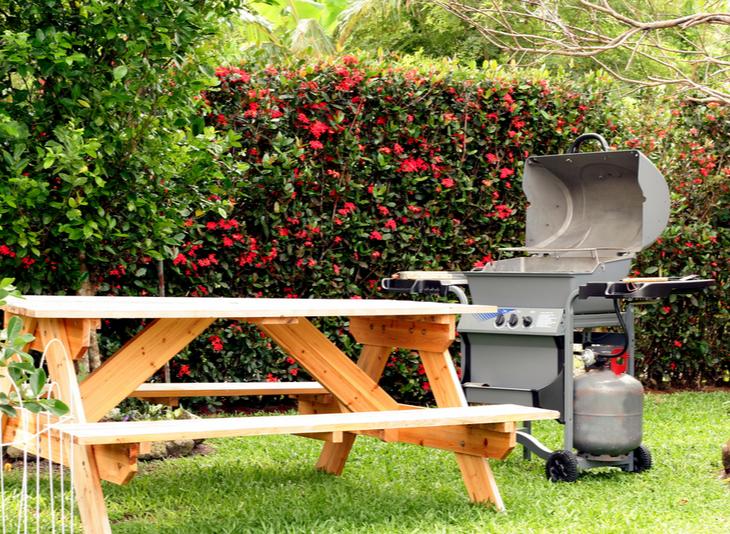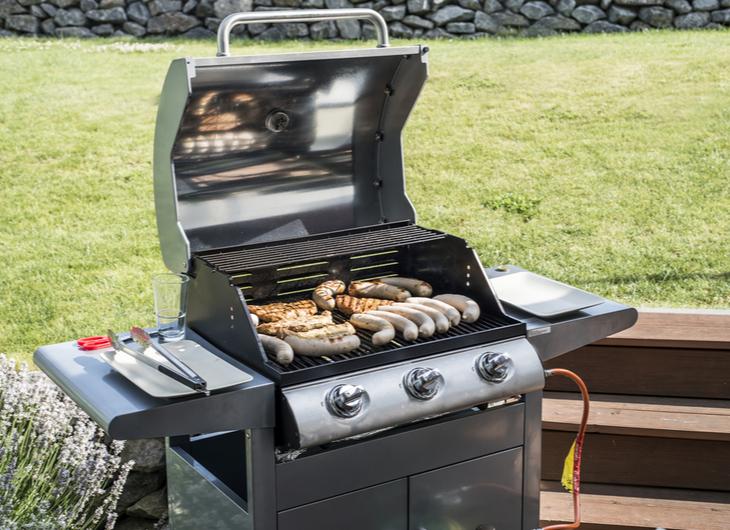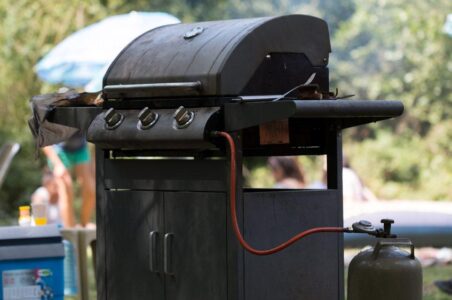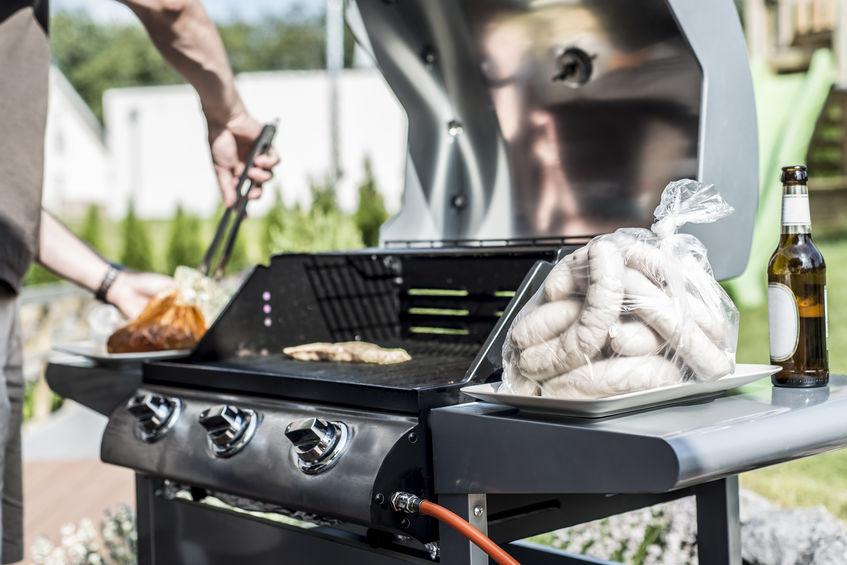This content has been archived. It may no longer be relevant
 Grilling is a beloved pastime for many, and choosing the right grill is important.
Grilling is a beloved pastime for many, and choosing the right grill is important.
When it comes to gas grills, one of the most common choices is between 2 and 3-burner models.
While both types of grills have their advantages, there are important differences to consider.
One key difference between 2 and 3-burner grills is their size. 2-burner grills are generally smaller and more compact, making them a good choice for those with limited outdoor space.
On the other hand, 3-burner grills are larger and offer more cooking space, making them a better choice for those who like to entertain or cook for larger groups.
Another important consideration is heat distribution.
With more burners, 3-burner grills can offer more even heat distribution, which is important for achieving perfectly cooked food.
However, 2-burner grills can still provide plenty of heat and are often more affordable than their larger counterparts.
Understanding these differences can help grill enthusiasts make an informed decision when choosing between 2 and 3-burner grills.
Fundamentals of Grill Design
-
Burner Configuration
One of the most important aspects of grill design is the burner configuration.
The number of burners on a grill can range from one to six or more, but the most common configurations are two and three burners.
Napoleon and Weber are two popular brands that offer grills with both two and three burners.
Two-burner grills are ideal for small families or for those who don’t need to cook large amounts of food at once.
Three-burner grills, on the other hand, are perfect for larger families or for those who love to entertain guests.
The advantage of having more burners is that it allows for greater versatility in cooking.
With a three-burner grill, for example, you can have one burner set to high heat for searing, one set to medium heat for cooking, and one set to low heat for keeping food warm.
-
Heat Distribution
Another important factor in grill design is heat distribution.
Even heat distribution is crucial for achieving perfectly cooked food.
The heat should be evenly distributed across the cooking surface to ensure that all parts of the food are cooked evenly.
Napoleon and Weber both use different methods to ensure even heat distribution.
Napoleon grills use a patented wave-shaped cooking grid that helps to distribute heat evenly across the cooking surface.
Weber grills, on the other hand, use a system of flavorizer bars that help to distribute heat evenly and also add flavor to the food.
In conclusion, when choosing between a two-burner and a three-burner grill, it’s important to consider your specific cooking needs.
Both Napoleon and Weber offer high-quality grills with excellent burner configurations and heat distribution systems.
Comparing 2-Burner Grills

-
Advantages of 2-Burner Grills
Two-burner grills are a popular choice for those who want a compact and affordable grill that can still cook a decent amount of food.
Here are some of the advantages of 2-burner grills:
- Affordability: Two-burner grills are generally less expensive than their larger counterparts, making them a great option for those on a budget.
- Compact size: Two-burner grills are smaller in size, which makes them ideal for those with limited outdoor space or for those who want to take their grill with them on camping trips.
- Ease of use: Two-burner grills are easy to use and require less maintenance than larger grills. They are also easier to clean and store.
Limitations of 2-Burner Grills
While two-burner grills have their advantages, they also have some limitations.
Here are some of the limitations of 2-burner grills:
- Limited cooking space: Two-burner grills have a smaller cooking surface, which means they can only cook a limited amount of food at a time. This can be a disadvantage if you are cooking for a large group of people.
- Limited temperature control: Two-burner grills may not have the same level of temperature control as larger grills. This can make it difficult to cook certain foods, especially if you need to cook at different temperatures.
- Limited features: Two-burner grills may not have all the features that larger grills have, such as side burners, rotisserie attachments, or smoker boxes. This can limit the types of food you can cook and the methods you can use to cook them.
Comparing 3-Burner Grills
Advantages of 3-Burner Grills
Three-burner grills offer several advantages over two-burner grills.
First, they provide more cooking space, which is ideal for larger families or for those who like to entertain guests.
With the additional burner, it’s possible to cook different types of food simultaneously, which saves time and effort.
Another advantage of 3-burner grills is that they offer greater heat control.
With three burners, it’s easier to adjust the temperature in different areas of the grill, which allows for more precise cooking.
This is particularly useful when cooking foods that require different cooking times or temperatures.
Finally, 3-burner grills tend to be more durable and long-lasting than 2-burner grills.
The additional burner puts less strain on each individual burner, which can help to extend the life of the grill.
Limitations of 3-Burner Grills
While there are many advantages to 3-burner grills, there are also some limitations to consider.
One of the main limitations is that they tend to be more expensive than 2-burner grills.
This is because they require more materials and are generally larger in size.
Another limitation of 3-burner grills is that they can be more difficult to move around.
Because of their size and weight, they may not be as portable as smaller grills, which can be a drawback for those who like to take their grill on camping trips or to tailgate parties.
Finally, 3-burner grills may require more maintenance than 2-burner grills.
With more burners and more components, there are more parts to clean and maintain.
This can be time-consuming and may require more effort than some people are willing to put in.
Overall, while 3-burner grills offer many advantages over 2-burner grills, they may not be the best choice for everyone.
It’s important to consider your specific needs and preferences before making a decision on which type of grill to purchase.
Performance and Cooking Experience

Heat Control
When it comes to heat control, both 2 and 3-burner grills offer similar performance.
However, it’s important to note that some brands, such as Napoleon and Weber, offer models with advanced heat control features that allow for more precise temperature management.
For example, Napoleon’s Prestige PRO™ 500 gas grill features their patented SIZZLE ZONE™ infrared side burner, which can reach temperatures up to 1800°F in seconds, providing the perfect sear for steaks and other meats.
Additionally, Weber’s Genesis and Summit® series grills come equipped with their GS4™ high-performance grilling system, which includes a powerful ignition system, high-performance burners, and Flavorizer® bars that evenly distribute heat across the cooking surface.
Cooking Space
The main difference between 2 and 3-burner grills is the cooking space they offer.
Generally, 3-burner grills provide more cooking space than their 2-burner counterparts, which can be beneficial for those who like to entertain or cook for larger groups.
For example, Napoleon’s Rogue® series offers both 2 and 3-burner models, with the 2-burner model providing 365 square inches of cooking space and the 3-burner model providing 570 square inches.
Similarly, Weber’s Spirit® II series offers a 2-burner model with 360 square inches of cooking space and a 3-burner model with 529 square inches.
Overall, both 2 and 3-burner grills can provide a great cooking experience, but it’s important to consider your specific needs and preferences when choosing between the two.
Brands such as Napoleon and Weber offer a range of models with different features and capabilities, so be sure to do your research and choose the one that best suits your needs.
Considerations for Purchase
When choosing between a 2-burner and a 3-burner grill, there are a few important factors to consider.
The following subsections will highlight key considerations to keep in mind when making your decision.
Space and Size
One of the most important factors to consider when choosing between a 2-burner and a 3-burner grill is the amount of space you have available.
If you have limited space, a 2-burner grill may be the better option, as it will take up less room on your patio or deck.
However, if you have a larger outdoor space and frequently entertain guests, a 3-burner grill may be a better choice.
A larger grill will allow you to cook more food at once, which can be particularly helpful when hosting large gatherings.
Price and Value
Another important consideration when choosing between a 2-burner and a 3-burner grill is the price.
Generally, 3-burner grills are more expensive than 2-burner grills, so it’s important to consider whether the added cost is worth it for your needs.
If you frequently cook for large groups or enjoy hosting outdoor parties, a 3-burner grill may be a good investment.
However, if you primarily use your grill for small family meals, a 2-burner grill may be a more cost-effective option.


 In the realm of grilling, the choice between a 2-burner and a 3-burner gas grill is a decision that hinges on various factors.
In the realm of grilling, the choice between a 2-burner and a 3-burner gas grill is a decision that hinges on various factors.